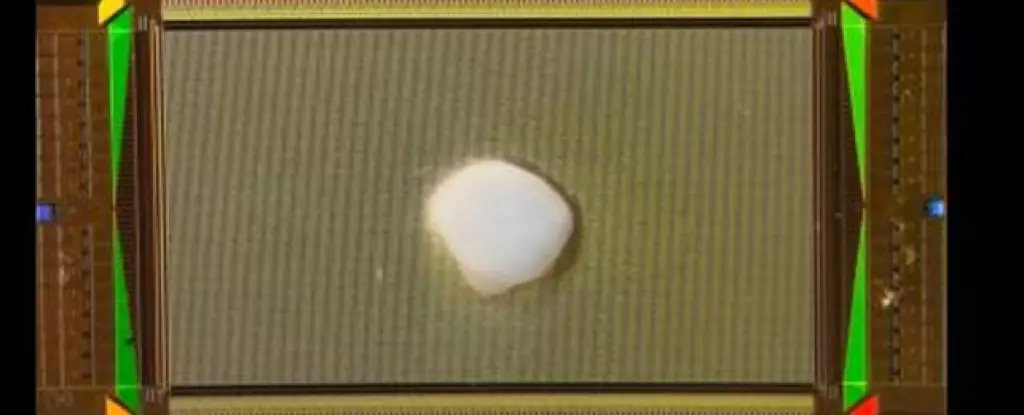There is no computer even remotely as powerful and complex as the human brain. The lumps of tissue ensconced in our skulls can process information at quantities and speeds that computing technology can barely touch. While modern computers boast of their capabilities, they are nowhere near the efficiency and adaptability of the human brain. To bridge this gap, a groundbreaking technological advancement called Brainoware has emerged. Brainoware integrates real, actual human brain tissue with electronics, redefining computer architecture as we know it.
The neuron’s efficiency in serving as both a processor and memory device is key to the brain’s superiority. This is in stark contrast to the physically separated units in most modern computing devices. With Brainoware, engineers led by Feng Guo of Indiana University Bloomington have taken a pivotal step towards creating a more brain-like computer. They fed Brainoware tasks like speech recognition and nonlinear equation prediction, showcasing its potential. Although Brainoware was slightly less accurate than a pure hardware computer running on artificial intelligence, this research demonstrates an important first step in a new kind of computer architecture.
While Guo and his colleagues adhered to ethics guidelines in developing Brainoware, the significance of ethical considerations cannot be overstated. Several researchers from Johns Hopkins University cautioned the community to pay attention to the neuroethical issues that surround biocomputing systems incorporating human neural tissue. Lena Smirnova, Brian Caffo, and Erik C. Johnson stress the importance of examining these considerations as the sophistication and capabilities of these organoid systems increase.
The human brain is undeniably remarkable. With an estimated 86 billion neurons and up to a quadrillion synapses, it operates on a level that surpasses our current understanding. Our best attempts to simulate the brain’s activity in artificial systems have barely scratched the surface. An endeavor by Riken’s K Computer in 2013 showcased the steep challenges involved. The supercomputer, equipped with impressive processing power and memory, took 40 minutes to simulate just one second of a fraction of the brain.
In recent years, scientists and engineers have pursued neuromorphic computing to approach the capabilities of the brain. They have designed hardware and algorithms that mimic the structure and functionality of the human brain. While progress has been made in this realm, the energy-intensive nature of neuromorphic computing and the time-consuming training of artificial neural networks remain as significant hurdles.
The Brainoware Approach
Guo and his colleagues have taken a different approach to overcome these challenges. They have utilized real human brain tissue grown in a lab to create Brainoware. By coaxing human pluripotent stem cells to develop into different types of brain cells, they have formed three-dimensional mini-brains called organoids. These organoids mimic the structure and connectivity of the brain, enabling researchers to study its development and workings without intervening in an actual human.
A Fusion of Human Tissue and Electronics
Brainoware consists of brain organoids connected to an array of high-density microelectrodes. It utilizes artificial neural network technology known as reservoir computing. Information is transported into the organoid through electrical stimulation, and it is processed within the reservoir. Brainoware then generates its calculations in the form of neural activity. The input and output layers of Brainoware are handled by conventional computer hardware, which must be trained to function with the organoid. The output layer reads the neural data and makes classifications or predictions based on the input.
Pioneering Results
To showcase the system’s capabilities, the researchers tested Brainoware’s ability to identify one specific individual’s voice among 240 audio clips from eight male speakers making Japanese vowel sounds. Even with just two days of training, Brainoware achieved 78 percent accuracy. It has also shown promise in predicting Hénon maps, a dynamical system known for chaotic behavior. After unsupervised learning for four days, Brainoware outperformed an artificial neural network without a long short-term memory unit.
Despite its advancements, Brainoware still faces significant limitations. One challenge is maintaining the organoids’ viability and health. Additionally, there are concerns about peripheral equipment power consumption levels. However, by considering the ethical implications and addressing the technological obstacles, Brainoware has the potential not only to revolutionize computing but also to unlock the enigmatic intricacies of the human brain. As Lena Smirnova, Brian Caffo, and Erik C. Johnson emphasize, this research is likely to provide foundational insights into learning mechanisms, neural development, and the cognitive implications of neurodegenerative diseases.
Brainoware represents a remarkable leap forward in the quest to bridge the gap between the power of the human brain and the limitations of modern computing. By integrating real human brain tissue with electronics and harnessing the neuron’s efficiency, Brainoware pioneers a new kind of computer architecture. As the field of biocomputing continues to progress, it is imperative to navigate ethical considerations and overcome technical challenges. Ultimately, Brainoware holds tremendous potential not only for the field of computing but also for unraveling the mysteries of the human brain.

Leave a Reply